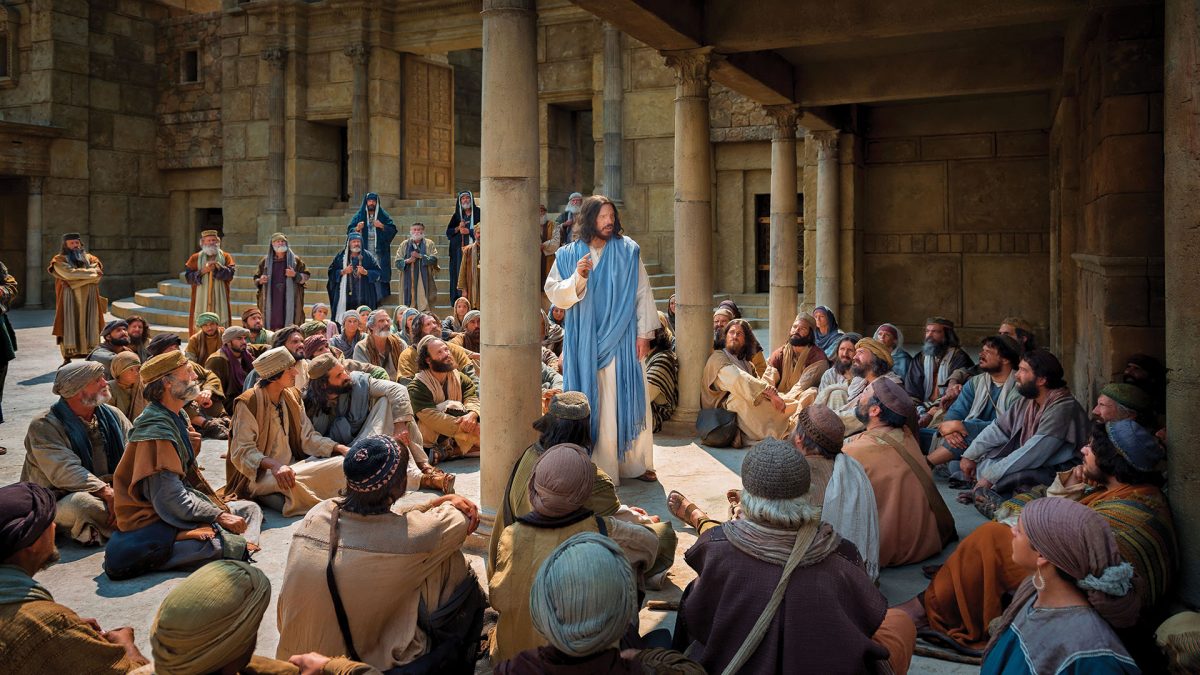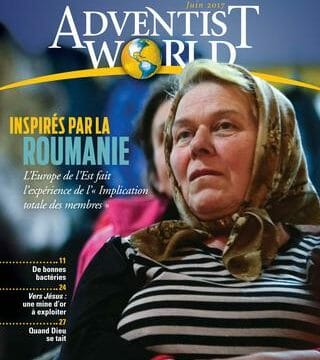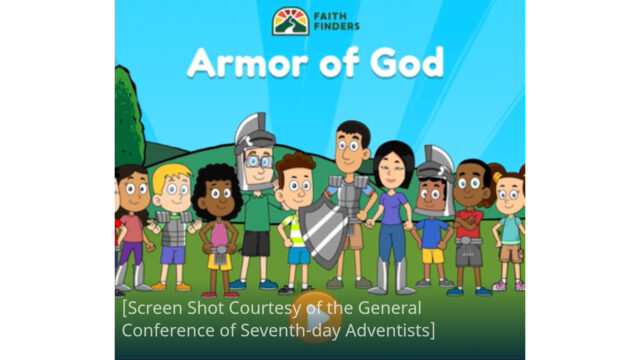Do you know the end of the story?

Grandma, tell me a story!” I begged as I crawled into Grandma’s warm bed. She sighed. She probably would have preferred to sleep a little longer. I cuddled closely against her back and listened carefully, because I didn’t want to miss a single word. Grandma spoke softly and slowly—stories of little Samuel in the tabernacle, of brave David with his sling, and of Jesus who loves all the little children.
Children love stories—and Jesus loves children! And He enjoys stories. How do I know? Well, He did not inspire the authors of the Bible to pen a collection of chemical formulas. Likewise, Scripture is not a collection of astronomical calculations, engineering formulas, or anything about quarks and photons. What we need to know about God and His love for this world is what the Creator told us—first to Adam and Eve, and later, to biblical authors inspired by the Holy Spirit.
Many people contributed to the writing of His great story, adding one piece of the puzzle after the other. Some of these pieces are part of the picture frame or even its corners. The overall picture is still incomplete, and in some places there are still some pieces missing. We can leave these parts alone or carefully fill in the gaps with our imagination.
WORD PICTURES
Imagination is a wonderful gift from the Creator because it creates new places in our mind, reminding us of the ingenious Inventor whose human name is “Jesus.” He tells us stories through the fascinating animals He created. Just think of the lanternfish, which lights its own lamp to attract prey. Unfortunately, it also wants to eat the curious little fish, a fact that we might like less. This illustrates, however, the dark side of the great story: eating and being eaten. This world has been taken hostage by God’s enemy—we learn all this from the tragic story of Eden and the stories that followed.
How did the author of Genesis find out about it? Did he watch a video or see a vision? Or did the Son of God tell him personally what it was like at Creation or at the Fall? After all, Moses was privileged to intimately communicate with God, as a friend talks to his best friend (cf. Ex. 33:11). Perhaps Moses didn’t need any moving pictures at all. The Master Storyteller was able to choose His words in such a way that the listeners became part of the story. It was as if they had watched the Creator planting a lush garden and, at His word, saw the jasmine bush shooting out of the ground, the surface of the earth suddenly being covered with a soft green carpet.
Moses saw flashing schools of herring cutting through crystal-clear, unpolluted seas. He heard the love song of whales, and his heartbeat was in tune with the hoofs of Arabian horses thundering across the plains. How skillfully did the Creator fashion Adam, blowing into him the life-giving breath as if by a kiss! Adam was then sent to the elephant, the zebra, and the monkey to give them their names.
Suddenly Adam felt very lonely in this menagerie. As the Creator watched His first human creature and the deep longing in his eyes, He gently laid him on the ground and closed his eyes. While Adam slept, God took a rib from his side and closed the gap over his heart (where there had been hard bones before) with soft, living tissue. God fashioned this “material” into a woman, who, together with her husband, became the “image of God.”
This story is told with so much attention to detail that it warms my heart every time I read it. Adam recognizes Eve as his exact counterpart, as “bone of my bones and flesh of my flesh” (Gen. 2:23). We are indivisible! In these few words and sentences we can already perceive the “instruction manual” for happy and harmonious marriages. All this is told in timeless words that can be understood by both young and old, educated and ordinary.
THRILLERS, DRAMAS, LOVE STORIES
Even genealogies can tell us “stories.” “Judah begot Perez and Zerah by Tamar”; “Salmon begot Boaz by Rahab, Boaz begot Obed by Ruth” (Matt. 1:3, 5). Each name represents a story, family drama, hope. “David the king begot Solomon by. . . the wife of Uriah” (verse 6)— goose-bump moments that paint a disastrous tragedy before our eyes, but at the same time point to God’s great mercy, which can write straight on crooked lines.
Together with the New Testament authors we believe that the whole Bible was written for our correction and instruction (2 Tim. 3:16). All these stories of failures and victories are intended to strengthen our trust in a mighty God, who did not feel too powerful to use flawed human “scribes.”
CLIFF-HANGERS AND MEMORY AIDS
When the Master Storyteller lived on earth, He knew how to captivate the attention of His listeners. A thousand comparisons from everyday life served as memory aids—the leaven, the splinter in the eye, the patched overcoat, the vine, the fig tree, ravens and lilies, a city on a mountain. With all these images Jesus illustrated His values and how God treats us. He often dressed His revelations about God’s kingdom in exciting stories. His comparisons painted everyday situations for His audience: the woman who is desperately searching for a lost silver coin that was part of her wedding dowry; the shepherd to whom a single sheep is so important that he ignores his tired feet and faces the long way back into the mountains, all the while calling and searching until he finds what was lost. Children enjoyed listening to Jesus because He was able to connect to them through stories.
I found more than 50 stories in the New Testament, some of them very detailed. One such is the story of someone who was attacked by robbers and left half dead (Luke 10:30-37). We can literally “see” how the priest gathers his clean robe in disgust as he crosses to the other side of the road and walks past the bleeding victim. He doesn’t want to pollute himself. The Levite too changes to the other side! But then someone approaches who is despised by pious people: a Samaritan. Do we bend over the unconscious man with him? Do we rummage with him through his bag for the wineskin so that he can disinfect the wounds and bandage them? Can we hear the Samaritan groan as he heaves the injured man onto his donkey? The next inn is far, but nothing can keep the man from his service of love. He ignores his own fatigue as he tends to the wounded man in the rented room all night long, and then pays the landlord extra for the care of the recovering traveler.
Even if a modern reader doesn’t fully grasp the dangers of the route or all the circumstances of the rescue operation, we can all picture ourselves in this scene. We too are disturbed by the question: Who was a “neighbor” to the victim? That’s why Jesus’ appeal, “Go and do likewise,” can also reach our hearts.
OBSTACLES
Jesus never spoke in complicated ways—and yet sometimes even His best friends didn’t understand Him. When Jesus prepared the disciples for His suffering, they couldn’t grasp His words: “This saying was hidden from them” (Luke 18:34). Why didn’t they understand? Did it have something to do with their expectations? After all, Peter had sharply criticized his Lord, inwardly rebelling against God’s plan of salvation (cf. Matt. 16:21-23), because this path didn’t coincide with his own agenda. Peter wasn’t the only one.
Our convictions and cherished attitudes may prevent us from correctly understanding our Lord’s masterful stories. In Matthew 13:11-13 Jesus adds another reason why He often clothed His thoughts in stories. These stories are told so that we can put our trust in God, remember His deeds, and obey His commandments. But we will under- stand them correctly only if we open our hearts and minds to the Master Storyteller, something that can happen only when we allow the Master Teacher, the Holy Spirit, to do what He does best (John 16:13).
PRECIOUS JEWELS
These stories are as precious as jewels. As John is exiled on the island of Patmos, God’s angel shows him the New Jerusalem in a story with moving pictures. The angel measures the walls and gates with a golden yardstick. The measurements suggest Jerusalem’s perfect dimensions: streets of gold, foundation stones in the walls made of jasper, sapphire, chalcedony, emerald, sardonyx, sardius, chrysolite, beryl, topaz, chrysoprase, jacinth, and amethyst. Every Israelite high priest had worn such precious stones on his chest. They were supposed to show that he cared about the people of God, about every tribe (cf. Ex. 28; Rev. 21:19, 20). Their names were also engraved on pieces of onyx on the priest’s shoulders. What stories do these precious stones tell, which now shine and sparkle in the light of God’s grace?
I am particularly moved by a “mini story” found in the last chapter of the Bible. It communicates a “maxi content.” In only a few words it describes the criteria for our eternal happiness. The inhabitants of the New Jerusalem are God’s servants, whose names have been entered in the book of life. They love God and “serve” Him. The next words offer a great summary: “They shall see His face, and His name shall be on their foreheads” (Rev. 22:4).
His name, on my forehead. There is no better way to describe the transformation and connectedness to Him who yearns to spend eternity with us.








